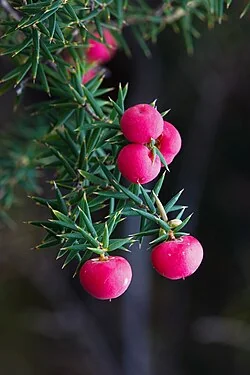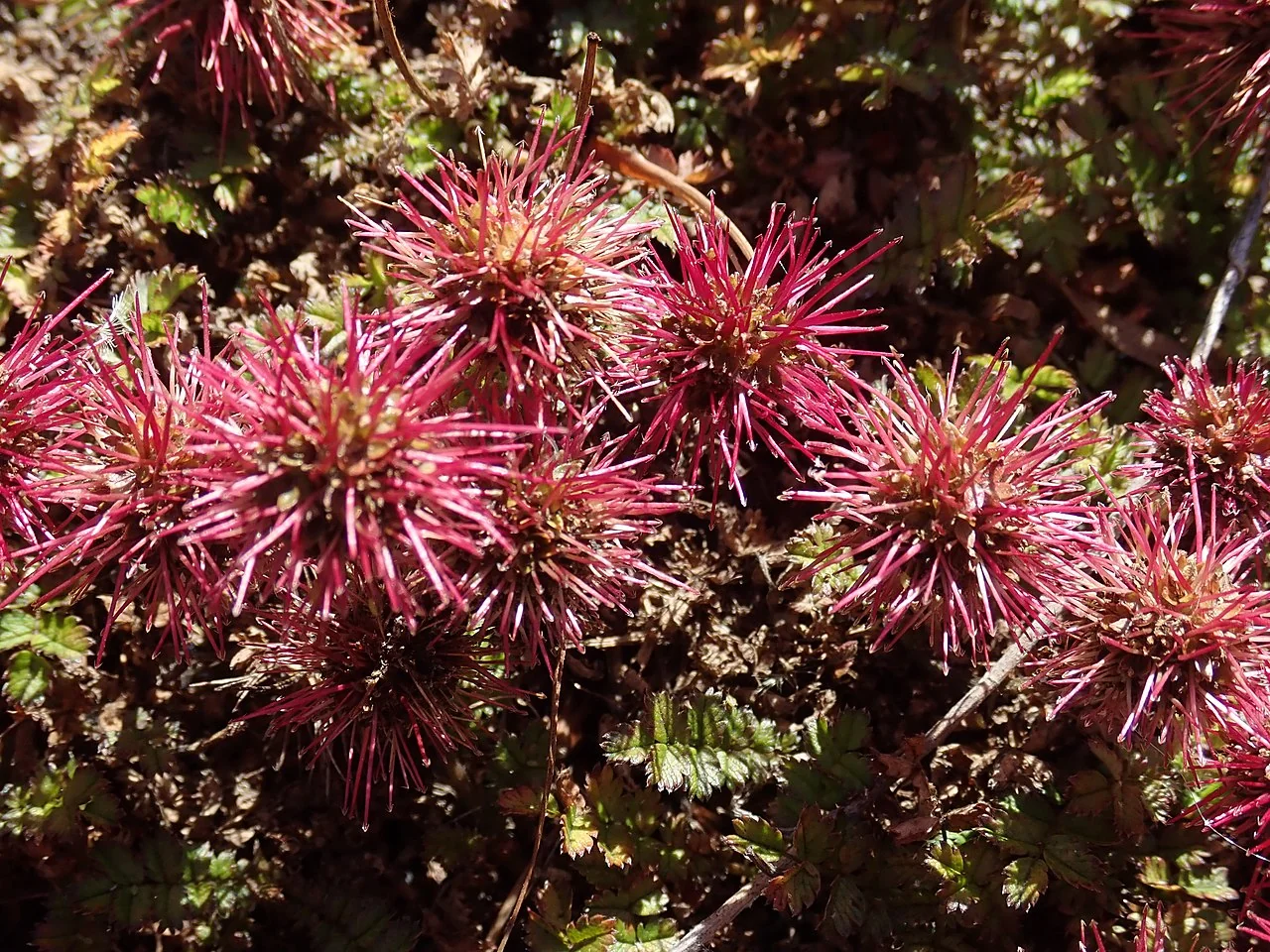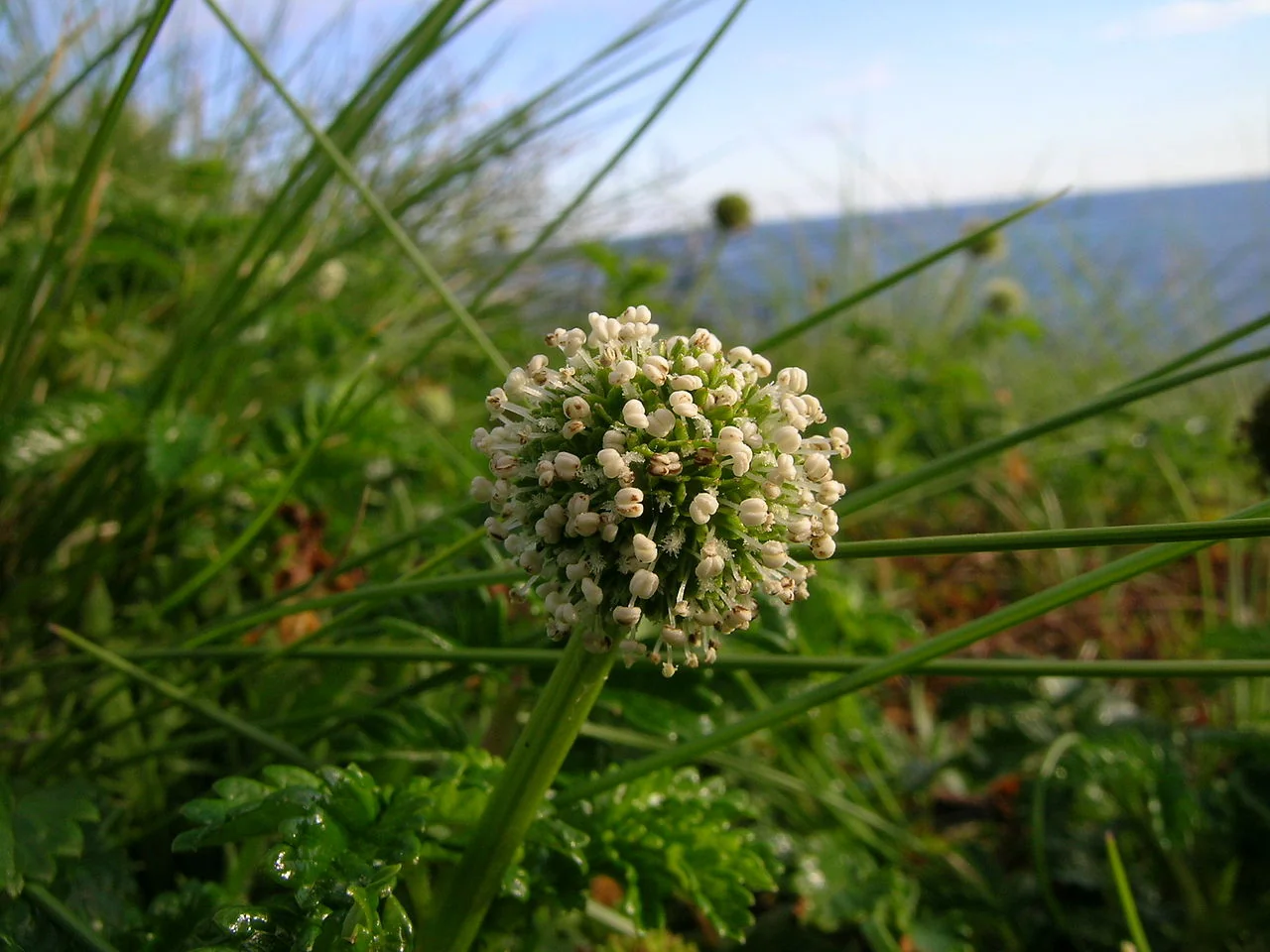
Prickly Heath
Leptecophylla juniperina
Prickly Heath ( Leptecophylla juniperina ), also known as Prickly Mingimingi, is a hardy and variable species among New Zealand's native shrubs , belonging to the heath family. It is characterized by its sharp, needle-like leaves and dense, bushy growth habit, which can range from a low-growing shrub to a small tree. This resilient plant produces small, white, bell-shaped flowers, followed by colourful berries that can be red, orange, or white. It is widespread throughout New Zealand, from coastal to alpine areas, and is a common component of scrubland and forest margins. Its tough nature and attractive berries make it a valuable plant for revegetation projects and native gardens.

Plant Description
Botanical Features
Prickly Heath ( Leptecophylla juniperina ), also known as Prickly Mingimingi, is a hardy evergreen shrub native to New Zealand and Australia. It typically grows as a compact or tall shrub, reaching heights of 0.4-2 meters, though it can rarely grow into a small tree up to 6 meters tall. Its most distinctive feature is its sharp, needle-like leaves, which are narrowly egg-shaped, dark green, bronze-green, or green, measuring 4.2-18 mm long and 1.1-2.5 mm wide. The leaves have a sharply pointed, pungent tip. It produces small, bell-shaped flowers, typically white or cream-coloured, followed by fleshy drupes (berries) that can be white, pale pink, dark pink, red, or red-black. This species is found in a wide range of habitats from coastal to alpine areas, including scrubland and forest margins.
Quick Facts
Shrub Summary
| Scientific Name | Leptecophylla Juniperina |
|---|---|
| Common Name | Prickly Heath, Prickly Mingimingi |
| Family | Ericaceae |
| Height | Up to 2 m |
| Spread | Up to 1.5 m |
| Light | Full sun to partial shade |
| Soil | Well-drained, acidic soils |
| Water Needs | Low to Moderate |
| Frost Tolerance | High |
| Salt Tolerance | High |
| Growth Rate | Slow to medium |
| Lifespan | Perennial |
Climate Best Suited to
Regional Suitability
Prickly Heath ( Leptecophylla juniperina ) is remarkably adaptable, found in a wide range of New Zealand climates from coastal to subalpine and alpine zones. It thrives in cool, moist temperate climates but can tolerate drier conditions once established. Its natural habitat includes open shrublands, forest margins, and rocky slopes, indicating a preference for well-drained sites with good air circulation. It is highly frost-tolerant, making it suitable for colder regions, and can also withstand high salt spray in coastal environments.
| Whangārei | Ideal |
| Auckland | Ideal |
| Hamilton | Suitable |
| Rotorua | Suitable |
| Tauranga | Ideal |
| Gisborne | Ideal |
| New Plymouth | Ideal |
| Whanganui | Ideal |
| Palmerston North | Suitable |
| Napier | Ideal |
| Wellington | Ideal |
| Nelson | Ideal |
| Christchurch | Suitable |
| Dunedin | Suitable |
| Invercargill | Suitable |
| City | Climate Suitability |
|---|
Natural Habitat
Heath Distribution
Understand the natural habitat of Prickly Heath ( Leptecophylla juniperina ), which is found throughout New Zealand, from coastal areas to subalpine and alpine zones. This section details its geographical distribution, preferred environmental conditions, and the types of ecosystems where it naturally occurs.
- Widespread across New Zealand, from sea level to high altitudes.
- Found in coastal areas, forest margins, shrublands, and rocky alpine slopes.
- Prefers well-drained, acidic sites.
- Thrives in full sun to partial shade.
Its broad habitat range highlights its adaptability and resilience, making it a fascinating subject for ecological study.
Plant Conservation Efforts
Conservation Status
While currently listed as 'Not Threatened', Prickly Heath ( Leptecophylla juniperina ) is an endemic New Zealand species, and its conservation is important for maintaining the country's unique biodiversity. Its wide distribution and adaptability contribute to its stable status.
- Monitoring of wild populations to assess potential threats.
- Protection of diverse habitats where it naturally occurs.
- Cultivation in gardens helps to preserve genetic diversity.
- Public awareness of endemic species importance.
By growing Prickly Heath, gardeners contribute to the appreciation and informal conservation of this hardy native plant.
Detailed Growing Requirements
Advanced Growing Tips
A more in-depth look at the specific conditions and care practices required for successfully growing Prickly Heath ( Leptecophylla juniperina ). This section provides comprehensive guidance for enthusiasts and professional growers aiming to cultivate this adaptable native shrub.
- Advanced soil preparation techniques for various soil types.
- Detailed light and temperature preferences, including considerations for exposed sites.
- Specialized watering methods to maintain consistent soil moisture without waterlogging.
- Considerations for pruning to maintain desired size and shape.
Planting Guide
Best Time to Plant
The best time to plant Prickly Heath is during autumn or spring, when temperatures are mild and rainfall is more consistent. This allows the plant to establish its root system before the extremes of summer heat or winter cold.
Choosing a Location
Select a site with full sun to partial shade and well-drained, acidic soil. Prickly Heath is ideal for rock gardens, alpine plantings, borders, or as a low hedge in native plant landscapes. Ensure it has good air circulation.
Planting Steps
- Dig a hole twice the width of the root ball and the same depth.
- Gently remove the plant from its container, being careful not to disturb the roots.
- Place the plant in the hole, ensuring the top of the root ball is level with the surrounding soil.
- Backfill with amended soil, firming gently around the base of the plant.
- Water thoroughly immediately after planting to settle the soil.
- Apply a light layer of organic mulch to help retain moisture and suppress weeds, keeping it away from the stem.
Initial Care
Water regularly during the first 6-12 months to help establish a strong root system. Once established, Prickly Heath is reasonably low maintenance and requires less frequent watering. Protect young plants from extreme conditions if necessary.
Ecological Role
Heath Ecosystem Importance
The ecological importance of Prickly Heath ( Leptecophylla juniperina ) within its native New Zealand ecosystems is significant. Its berries provide a food source for native birds, contributing to the local food web and aiding in seed dispersal across diverse habitats.
- Berries provide a food source for native birds.
- Dense foliage provides shelter for small birds and invertebrates.
- Contributes to biodiversity in diverse ecosystems, from coastal to subalpine scrub.
As an endemic species, it is an integral part of the unique biodiversity that has evolved in New Zealand, supporting the delicate balance of its natural habitats.
Uses and Significance
Garden Uses
- Excellent for rock gardens, alpine plantings, and borders.
- Suitable as a low-growing groundcover or small shrub.
- Provides winter interest with its colourful berries.
- Attracts native birds to its fruits.
Cultural Significance
Leptecophylla juniperina , commonly known as mingimingi or prickly mingimingi, holds cultural significance primarily in New Zealand. The botanical name "mingimingi" in Te Reo Māori translates to "curly" or "twisted," reflecting aspects of the plant's appearance.
Key Aspects of Its Cultural Significance Include:
- Traditional Māori Medicine: Māori utilized infusions made from the leaves of Leptecophylla juniperina to address various health concerns, such as asthma, kidney disorders, rheumatism, and infected wounds.
- Edible Fruit: The plant produces edible berries.
- Biodiversity and Ecology: As an endemic New Zealand species, its conservation is vital for the country's unique biodiversity. The plant's fruits also serve as a food source, attracting native birds.
Landscaping Applications
Garden Design Uses
Prickly Heath ( Leptecophylla juniperina ) is a highly versatile and attractive plant for various landscaping applications, particularly in native and low-maintenance gardens. Its compact form and unique foliage make it a valuable asset.
- Ideal as a specimen shrub or groundcover.
- Excellent for native plant gardens, rockeries, and alpine plantings.
- Provides year-round interest with evergreen, needle-like leaves.
- Suitable for mass plantings or as an accent plant.
Its ability to thrive in challenging conditions and its aesthetic appeal make it a popular choice for creating resilient and beautiful native landscapes.
Seasonal Care Calendar
Spring
New growth emerges, and delicate bell-shaped flowers may appear. This is an ideal time for planting new Prickly Heath specimens or propagating from cuttings. Ensure consistent moisture for young plants and protect them from strong winds if necessary. A light feed with a slow-release native plant fertilizer can encourage vigorous growth.
- Ideal time for planting and propagation.
- Ensure consistent moisture for new plants.
- Light fertilization if needed.
Summer
Prickly Heath is actively growing and may produce flowers and developing berries. Consistent watering is important, especially during dry spells, to prevent stress. Monitor for pests and diseases, though it is generally quite resilient.
- Active growth and flowering.
- Consistent watering is essential.
- Monitor for pests and diseases.
Autumn
Berries ripen and become prominent in autumn, persisting through winter. This is another good time for planting, allowing roots to establish before winter. Minimal care is required for established plants, but ensure they remain adequately hydrated.
- Berries ripen and provide winter interest.
- Good time for planting.
- Ensure adequate hydration.
Winter
Prickly Heath provides excellent winter interest with its persistent berries. It is highly frost-tolerant and requires minimal care during this period. Ensure good drainage to prevent root issues in wet conditions, especially if snow cover is prolonged.
- Provides winter interest with berries.
- Highly frost-tolerant.
- Ensure good drainage.
When to Prune and How Much
Light Pruning
Prickly Heath generally requires minimal pruning. The primary reason for pruning is to remove dead or damaged stems, or to tidy up the plant's appearance. Light trimming can encourage denser growth.
- Remove dead or damaged stems as needed.
- Light trimming to maintain shape and encourage density.
- Best done in late winter or early spring before new growth.
- Use clean, sharp tools.
Avoid heavy pruning, as this can stress the plant. Its natural compact habit is part of its charm, so allow it to grow naturally.
How to Grow Prickly Heath
Prickly Heath, also known as Prickly Mingimingi, is a hardy and versatile native shrub that adds year-round interest to any garden with its sharp, needle-like leaves and colourful berries. It is a resilient plant, found in a wide range of habitats from coastal to alpine zones, making it an excellent choice for rock gardens, borders, and native plantings. While it is a relatively low-maintenance plant, successful cultivation requires attention to its specific needs, particularly regarding well-drained, acidic soil and full sun to partial shade. Understanding its propagation methods is key to successfully growing this delightful species.
From Seed
Propagating Prickly Heath from fresh seed is a viable method, though germination can be slow and may require stratification. Collect ripe berries in late autumn or early winter. Clean the seeds thoroughly to remove any fleshy pulp. Sow the seeds in a tray filled with a well-draining, acidic seed-raising mix, lightly covering them. The seeds typically require a period of cold stratification (e.g., refrigerate for 2-3 months) to break dormancy. Maintain consistent moisture in the seed tray and keep it in a cool, sheltered location. Germination can take several weeks to months after stratification. Once seedlings have developed a few true leaves, they can be potted into individual containers and grown in a sheltered environment before planting out.
From Cuttings
Semi-hardwood cuttings are the most reliable and efficient method for propagating Prickly Heath, ensuring that new plants retain the exact characteristics of the parent. Take 5-10 cm cuttings from healthy, non-flowering stems in late summer or early autumn. Remove the lower leaves and dip the cut end in a rooting hormone. Insert the cuttings into a well-draining propagation mix (e.g., sand and perlite). Keep the cuttings in a cool, humid environment, out of direct sunlight, perhaps under a plastic dome or in a propagator. Rooting typically occurs within 8-12 weeks. Once rooted, the new plants can be potted on and grown in a sheltered environment until they are ready for planting.
Pests and Diseases
Prickly Heath is a remarkably robust plant and generally resistant to most pests and diseases. Its adaptation to diverse environments means it has few significant natural enemies.
Common Pests
- Generally pest-free.
- Occasionally, aphids or scale insects may appear on new growth, but rarely cause significant damage.
Common Diseases
- Highly resistant to diseases.
- Root rot can occur in poorly drained, waterlogged soils.
- Leaf spot diseases are rare but can occur in very humid conditions.
Good garden hygiene, proper watering, and excellent drainage are key to preventing most pest and disease issues. Healthy, well-sited plants are rarely affected by significant problems.
Bonus Tip
Expert Growing Advice
The berries of Prickly Heath are edible and were traditionally eaten by Māori. They have a sweet, slightly gritty texture. The colour of the berries can vary from white to pink to dark red, sometimes all on the same bush!







